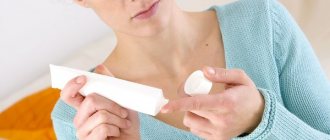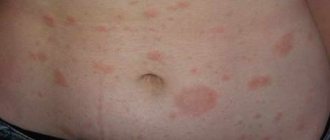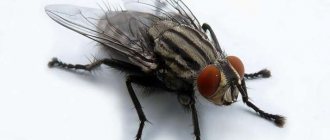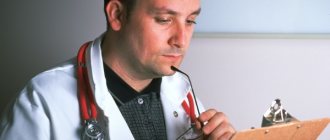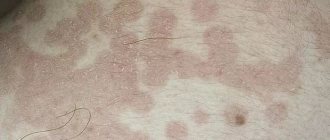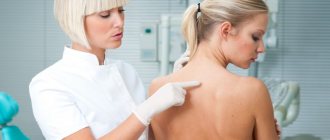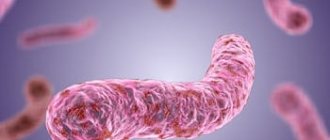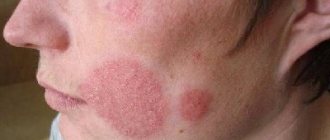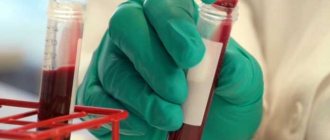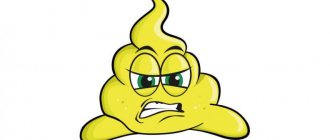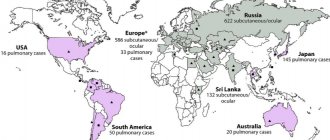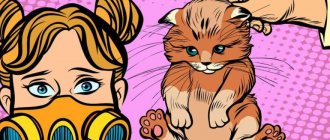Ringworm in humans is a skin disease caused by fungi of the genus Microsporum and Trichophyton. It can affect hair, skin, sometimes eyelashes and even nail beds. But most often, the affected areas are located on the head, where round-shaped foci of lichen are formed. They can be quite large, approximately the size of a human palm. The hair growing in this place breaks off at a height of approximately 5 mm, making it appear as if it had been cut. This characteristic property gave the name to this disease.
Prevalence of the disease
In children, ringworm is the most common skin disease. Susceptibility to it among children is high, since their skin is thin and delicate, so the fungus penetrates through it very quickly. The highest number of cases of infection among children occurs in August-September.
Adults are just as sensitive to fungus as children. For them, ringworm is in 2nd place, right after fungal diseases of the feet. Mostly young women get sick. Interestingly, red-haired ladies are almost not susceptible to ringworm.
Symptoms
Ringworm in a patient (including children) can manifest itself with a variety of symptoms. If the disease is observed on the skin, it manifests itself in the form of peeling skin . In the affected areas, scales appear, which are characterized by white-gray shades. When foci of inflammation appear in the scalp, fragility and hair loss will occur.
In most cases, the inflammatory foci are the same . They appear in the form of rounded neoplasms, the diameter of which reaches 3 centimeters. The disease can be small-focal and large-focal. Most patients complain of the appearance of peeling of inflammation .
Ringworm is characterized by the presence of certain signs, according to which you can independently determine the disease.
Causes of the disease
Since the causative agents of lichen are fungi belonging to the genera Microsporum and Trichophyton, this disease has 2 more names - microsporia and trichophytosis.
The first type of disease is caused by a zoonotic species of fungus that affects street stray cats and dogs, especially young ones. They are also dangerous for humans, but the disease caused by them passes much easier and rarely becomes chronic.
It is divided into:
- microsporia of smooth skin;
- microsporia developing on the scalp.
But anthroponotic fungi, characteristic only of humans, cause much more serious cases of the disease, which is called trichophytosis. The source of infection in such cases is always a sick person.
Main routes of transmission
Ringworm is contagious and can be spread from an infected person. Contact with a carrier of infection is the main route of infection.
A pathogenic fungus can spread:
- from person to person;
- from a sick animal (the most common carriers are street dogs and cats, and livestock);
- rarely - through water or soil;
- through personal belongings and household surfaces.
The disease is very contagious and can be epidemic, affecting entire families and children's groups. Its pathogen can remain active for several weeks and even months without “residing” on any organism .
As medical practice shows, in most cases, ringworm is transmitted from an infected animal to humans. It is children who often become infected in this way - while walking on the street, a child can touch, stroke other people’s pets or street inhabitants, play or stay in their places. The animal may not have visible signs of illness. In many cases, ringworm develops in a latent form, but the danger of spreading the pathogenic fungus remains.
You can become infected without direct contact with a representative of the animal world; just touching any surface or household item that has fur or pieces of skin scales remains on it. Often they remain:
- in sandboxes;
- on benches;
- in things left at the entrance;
- on laundry hung outside to dry.
You can get ringworm from someone who is sick. Direct contact with an infected person is the main prerequisite for the spread of infection:
- handshake;
- embrace;
- being nearby, for example, on public transport;
- joint children's games.
Personal belongings and accessories of the sick person (clothing, shoes, bedding, combs, toys) are often a source of infection with ringworm.
Being in public places (swimming pool, bathhouse, kindergarten groups and classrooms) with a sick person is dangerous. The fungus can get on the skin when visiting hairdressers if the establishments neglect to disinfect working tools, so it is important to pay attention to compliance with sanitation rules.
The causative agent of ringworm, once on the skin, does not always cause the development of the disease. You can get sick if the pathogen is activated, which happens in the following cases:
- reduced immune defense;
- softening or maceration of skin areas from prolonged contact with water;
- violation of the integrity of the skin;
- frequent presence in public places with large crowds of people;
- neglect of personal hygiene.
How do you get infected with fungus?
People become infected with ringworm after tiny fragments of skin, hair, or tiny pieces of fur infected with the fungus settle on their skin. Even spores of this fungus that fall on the surface of the earth can live on it for up to 3 months, while maintaining their activity and pathogenicity. Therefore, you can become infected with lichen at any time, whenever you want and without it being noticeable to you.
People become infected from infected animals when they pet them, and from infected people - in the process of communicating with them or when sharing:
- towels;
- manicure scissors;
- hats;
- combs;
- washcloths.
The likelihood of infection greatly increases if the surface of the skin is softened after a long stay in water, there are abrasions, abrasions, scratches, burns, any skin diseases on its surface, or the person has reduced immunity due to infectious diseases, chronic stress or depression. The incubation period of the disease varies from 5 days to 1.5 months, but on average it takes 1 week. Its duration is influenced by the state of the human immune system and the type of pathogen.
Is shingles transmitted?
The contagiousness of lichen is determined by its type and the state of the person’s immunity. Medicine classifies this disease as conditionally transmitted. Although many doctors consider lichen to be truly contagious in all its forms, which are transmitted from sick to healthy. But the existence of such a disease in the form of a peculiarity of a particular person’s body and immunity has been proven. In this case, lichen may not even be treated, but it is not transmitted. Contagious forms include pink, ringworm and shingles. Their transfer is carried out:
- from a sick person to a healthy person through direct contact or the use of household and personal objects;
- from animals to humans through direct contact with them.
From person to person
One of the first ways that lichen is transmitted is from a sick person to a healthy one. Infection occurs through personal hygiene items, clothes, bed linen, and towels. Transmission is possible only through direct contact with a patient due to:
- touching;
- handshakes;
- kiss.
You can become infected on public transport by touching handrails, or through door handles. This is how pityriasis rosea can be transmitted. But this only happens upon contact with a person or his things. Is lichen transmitted from person to person by airborne droplets? The answer to this question is negative. People with weakened immune systems are especially susceptible to contact infection. Ringworm of a fungal nature is easily transmitted in a humid environment, for example, swimming pools, saunas, baths. They can also be infected through ordinary sand on the beach.
From dog to man
Ringworm is transmitted from dog to person. It is considered the most highly contagious. This form of the disease is more often observed in children who come into contact with stray animals. To avoid infection, you need to limit your child from street dogs. Sick animals are characterized by areas of baldness. Because of this, lichen is called ringworm. Such areas should never be touched, as this is more likely to lead to infection, especially in a child.
From man to cat
Those lichen forms that are transmitted from animals to humans also have an effect in the opposite direction. If the patient has direct contact with a healthy cat, then she can also become infected with this unpleasant pathology. Especially active in this regard is ringworm. It is characteristic of animals and is easily transmitted from them to humans and vice versa.
From a cat
The same answer is suitable here as for the question of whether lichen is transmitted from dog to person. The situation does not change with the cat. If she is sick, then a person can easily become infected through direct contact. In addition, even a cat that has recovered from the disease is a potential source of pathology. Microspores could remain in the animal's fur, especially if it has high immunity. With single contact, infection often does not occur, but in this case it is still better to wash your shoes and wash your hands thoroughly with soap. You should stay away from cats with strange spots on their faces.
Ringworm on the scalp
Ringworm, which is located on the head, develops in the following sequence:
- At the very beginning of its appearance, it looks like a round or oval-shaped small reddish spot with clear outlines.
- Then the skin underneath swells and may begin to itch, but this does not always happen.
- Little by little, the spot grows in size and can reach 10 cm, the skin underneath begins to peel off, whitish or grayish scales form, and a red border consisting of small pimples forms on its edge.
- Tiny bubbles appear along the edges of the spot, which are then covered with yellowish crusts.
- New foci of the disease may appear around the first spot.
- Hair affected by the fungus becomes faded, loses its softness and shine. They lose their elasticity and do not straighten even after they are smoothed to the head.
- The mycelium grows inside the hair, as a result, it simply breaks off under the weight of its own weight close to the surface of the skin.
- The spots are covered with a specific white “floury” coating.
This type of lichen does not become inflamed, but causes significant psychological discomfort, since the head does not look very aesthetically pleasing.
Incubation period of lichen in humans
| Type of lichen | Incubation period |
| Ringworm | The incubation period ranges from 4-5 days when infected from an animal. When infected from humans, the period is up to 2 weeks. |
| Shingles | The incubation period in humans ranges from 3 days to one month. |
| Pityriasis rosea | The incubation period lasts for several months, depending on the degree of immunity reduction |
| Lichen planus | The incubation period is from 7 to 10 days. |
| Pityriasis versicolor | The incubation period is from one to three months, depending on the degree of infection of the skin. |
| Ringworm | The incubation period is from 3 to 7 days. |
| Pityriasis alba | It can manifest itself within several weeks and last up to several months, depending on the individual characteristics of the human body. |
| Squamosal lichen | The incubation period can last for 1 week and up to several months. |
| Tubular lichen | The incubation period is from 7 days to 1 month. |
| Asbestos lichen | This type of disease may appear within several weeks. |
Regardless of the length of the incubation period, when the first signs of the disease appear, you must consult a doctor.
Ringworm on smooth skin
The symptoms of ringworm, which is located in those parts of the body that are devoid of hair, are similar to those of pink lichen, but what distinguishes them from each other is the location: ringworm mainly develops on the face and neck, a little less often on other parts of the body, hands and feet . Pink does not affect these areas of the body.
The disease proceeds as follows:
- First, a large pink spot with a diameter of at least 2 cm appears on the skin of the body. It is also called the maternal plaque.
- Then the center of the spot becomes yellowish, wrinkles a little and begins to become covered with scales.
- 5 - 7 days after this, the whole body is covered with small oval spots with a diameter of 0.5 - 1 cm. Then, tiny dry scales are formed in their center, and a smooth red edge is formed along the edges.
You can see exactly what this type of lichen looks like in the photo.
Infectiousness during treatment
With active treatment, the spots completely disappear after a month and a half. At the same time, every week patients are tested for the presence of the pathogen. As a rule, tests do not detect traces of the pathogen already in the second week of treatment.
However, most doctors are confident that the pathogen does not completely disappear until the end of treatment, and the possibility of infecting other people is still present. Therefore, all precautions must be observed throughout the entire course of treatment.
Features of the disease
If ringworm is not completely cured in childhood, it will remain with the child until adolescence (13 – 15 years). In boys who have reached this age, self-healing usually occurs, and the disease does not recur, but in girls, without proper therapy, it goes into the chronic phase. Already in adult women, the prerequisites for this are malfunctions of the endocrine glands: the ovaries and the thyroid gland, as well as a lack of vitamins and a severe weakening of the immune system. It becomes much more difficult to cure chronic lichen in a person in adulthood than a fresh one that has just appeared.
Drug treatment for adults
Antifungal ointments, gels and solutions are used for therapy. A prerequisite is to take medications that strengthen the patient’s immunity. Depending on the form and severity of the disease, treatment lasts up to six months.
Ointments and gels
This is the most convenient and effective form of treatment for ringworm. Such drugs are easy to apply and are most often used to treat areas of smooth skin. Salicyllium ointment, Mycospor, Lamisil, etc. are considered popular drugs. All of them have a thick consistency; when applied to a specific area, they suppress the proliferation of fungal microflora and reduce discomfort.
Pills
Such drugs are prescribed exclusively by a specialist; they have a wide range of contraindications and side effects. The most popular are:
The course of treatment depends on the stage of ringworm and ranges from 2 weeks to six months. The effectiveness of treatment is monitored using bacterial analysis or using a fluorescent lamp. If the fungal flora continues to multiply, then a different treatment regimen is selected for the patient.
Immunomodulators
To strengthen local immunity, the patient is prescribed a course of immunomodulatory drugs. At the same time, a diet is prescribed, which includes foods with a high content of vitamins and microelements.
Deep ringworm
People become infected with this type of deprivation from animals. The fungus colonizes hair follicles and multiplies there. Typical symptoms such as redness and itching include:
- increase in volume and pain in the lymph nodes;
- rise in temperature;
- allergic rash;
- general weakness.
The average duration of inflammation is 2 or 3 months. During this period, large, uneven, lumpy, bright red plaques develop on the head due to inflammation of the follicles with pus and swelling of the skin. When pressed, purulent fluid comes out of them, and brownish crusts then form in the middle part. This type of lichen in men can affect not only the part of the head where the hair grows, but also the mustache and beard.
How is it transmitted?
The way a certain lichen is transmitted depends on its type. Some forms can be contracted from humans, while others can be contracted from animals. In general, transmission occurs through direct contact with the patient or through his personal belongings and those that he used. The risk group includes children and people with weak immune systems. If the body’s defenses are at a normal level, then even with contact it is possible that you will not become infected. In this case, the immune system easily copes with the pathogen. In general, there are several types of lichen:
Shearer
One of the common forms of lichen is ringworm. It is also considered the most contagious. The causative agent is the fungus trichophytosis or microsporia. People become infected first when they come into contact with a sick person. The second one is more often transmitted from street animals, so small children who easily pet and play with any cat or dog are more susceptible to it. Typical symptoms of ringworm may look like this:
- patches of redness with jagged edges, a flaky center and a border of small blisters;
- hairs fall out in the center of the spot;
- There may be patches of baldness on the head.
Treatment of the disease
It is possible to cure ringworm with the following ointments:
- 10 – 20% sulfur. The main active ingredient – sulfur – eliminates the microorganism and speeds up healing. It is enough to apply once a day.
- Salicilova. Destroys microorganisms and reduces inflammation. The affected areas should be treated with ointment and an antibacterial wipe should be placed on top.
- Sulfur-tar. This medicine should be applied to the lichen, slightly grabbing the skin near it and rubbed into it.
- Limisil. The cream begins to eliminate the fungus already on the 5th day of use. The course of therapy takes 35–45 days.
- Mikospor. Destroys the structure of the fungus at the cellular level. The ointment must be applied in a thin layer and gently rubbed into the skin. The course of therapy is 30 – 40 days.
Ointments can be combined with an iodine solution, which eliminates fungus and bacteria that can cause suppuration. Immediately before applying to the skin, you need to clean it with antiseptics: a solution of potassium permanganate, Rivanol or Furacilin.
Medical therapy
Specific therapy is prescribed by a doctor after diagnosing a form of lichen. Pink does not require special treatment, because immune cells cope well with it. In this case, antihistamines help speed up the process and reduce itching. To improve the condition, you should not wipe your skin after a shower - it should dry on its own. During the period of illness, you should not play sports, do hard work and often be in the sun. It will be useful to wear only natural fabrics. As for the treatment of other forms of lichen, it is carried out as follows:
- Shearer. Therapy includes topical antifungal drugs and oral antimycotics. Here, ointments, shampoos, gels and regular iodine are used to treat the edges of the stains to stop their spread.
- Pityriasis. It can be easily treated with ultraviolet light, so it goes away especially quickly in the summer. Here, the doctor also often prescribes antimycotics.
Ringworm is considered one of the most common childhood diseases. It is caused by parasitism of fungal microflora on the scalp, hairy areas and nail plates. With timely diagnosis, it is easy to treat.
Disease prevention
To reduce the risk of getting shingles, you need to take the following precautions:
- After interacting with someone else's cat or dog, you should wash your hands with laundry or tar soap or treat them with antiseptics.
- After visiting public swimming pools, saunas, and hairdressers, you need to wash your hair and whole body with the same soap, tar shampoo or Nizoral, a special shampoo with an antifungal effect. It is not recommended to use a hard washcloth, which can easily scratch, which further increases the risk of infection.
- You can treat your body with Citeal, a medicine that has a strong antifungal effect. It should be diluted in a ratio of 1 to 10 and used to wash only your hands or the whole body.
- Essential oils of tea tree, lavender and turpentine have the same effect. In diluted form, they can be used to treat small areas of the skin.
A week after suspicious contact, you should visit a dermatologist to identify the disease in the early stages, when there are still no obvious symptoms of the disease.
Treatment
Before curing a pathological process, it is necessary to correctly diagnose and develop an appropriate regimen. That is why patients are advised to seek help from a doctor. In most cases, with ringworm, a comprehensive treatment is prescribed , which will significantly speed up this process.
Drugs
Therapy for the pathological process must be comprehensive , which will guarantee its effectiveness. To eliminate the external manifestations of lichen, it is recommended to use medications in the form of ointments:
- Nizoral . A medicine based on ketoconazole has been developed, which is used to eliminate the causative fungus.
- Sulfur-tar ointment . It has pronounced disinfectant properties, which allows you to eliminate the symptoms of the pathology, as well as reduce the possibility of relapse.
- Lamisila . A medicine is produced based on terbinafimn, which has pronounced antifungal properties.
- Sulfur-salicylic ointment . A medicine has been developed based on salicylic acid, which actively fights fungi.
- Mycoseptina . The main component of the medicine is zinc, the action of which is aimed at drying the skin, which leads to a reduction in the manifestation of diseases.
- Klottmazole . It is characterized by the presence of antifungal and antiseptic effects.
To speed up the process of treating pathology, it is recommended to take tablets . In most cases, patients are recommended to be treated with Ketoconazole, Fluconazole, Terbinafine, Griseovulfine.
When the disease develops in the scalp, it is recommended to use special medicinal shampoos - Nizoral, Tar Shampoo, Sulsena, Dermazol. They are developed on the basis of ketoconazole, which effectively fights fungi.
Folk remedies
If there is a desire or need to cure a pathological process without pills, then it is recommended to use traditional medicine. They are characterized not only by effectiveness, but also by safety , which makes them possible to use for a wide range of patients. They are prepared on the basis of:
- Cabbage . It must be passed through a meat grinder and mixed with sour cream. The product is applied to the affected area and covered with plastic wrap. After the compress dries, it must be changed.
- Buckwheat . The cereal is boiled in water without salt in a ratio of 1:2. Buckwheat decoction is used to lubricate the affected areas.
- Beetroot . This product is boiled in a small amount of water. The resulting decoction is mixed in equal proportions. It is recommended to lubricate the areas affected by lichen with the medicine.
- Daisies . An infusion from the flowers of this plant is characterized by the presence of antiseptic properties. One spoon of chamomile flowers is poured into a glass of boiling water and left for an hour. After filtering, the product is used to wipe the affected areas. The procedure should be carried out an hour before swimming.
- Vinegar . With the help of this remedy, symptoms are relieved and rashes are reduced. In order for the acid to penetrate the skin as quickly as possible, it is necessary to cover it with a cloth after lubricating it. Quite effective in this case is the use of garlic vinegar, to which camphor oil is added in a few drops.
- Herbal collection . This remedy is highly effective in treating rashes on the scalp. To prepare the medicine, you need to take horsetail, tripartite and celandine. It is recommended to grind all components and mix in equal quantities. A few tablespoons of the mixture are poured with 250 milliliters of boiling water. The medicine is infused for two hours, and then filtered. You should rinse your hair with the resulting medication once a day.
With the help of traditional medicine, you can get rid of ringworm in the shortest possible time . To avoid unwanted effects, it is recommended that you consult your doctor before using a particular medicine.
Effective
Quite often it happens that, despite taking medications and folk remedies, no positive effect is observed in the treatment. This is due to the wrong way of life of a person. During the treatment of the disease, it is imperative to adhere to certain rules, for example personal hygiene .
The patient should use his own slippers, towels and washcloths. Before taking a bath, it is necessary to sanitize it. For this purpose, appropriate disinfectants are used. After using washcloths, it is recommended to wash them using laundry soap. After this they are thoroughly dried.
If the patient experiences increased sweating , then he needs to change clothes frequently. Also in this case, the use of powders and antiperspirants is recommended.
Compliance with the above rules during the treatment period will guarantee its success. Otherwise, therapy for the pathological process may be delayed.
What is psoriasis
- Types of psoriasis
- Symptoms of psoriasis
- Causes of psoriasis
- Quality of life of patients with psoriasis
- Video - what is psoriasis
- Treatment methods for psoriasis
Psoriasis is a chronic non-infectious skin disease, accompanied by the appearance of reddish-pink rashes and peeling of the skin. The term psoriasis comes from the Greek word psoriasis, which means pruritus or itchy skin. It is these symptoms that most clearly characterize this non-infectious dermatological problem. With this dermatosis, skin cell division occurs almost thirty times faster. Since they do not have time to fully mature, intercellular contacts are lost. This leads to the formation of characteristic scales. The body’s immune system is also involved in the pathological process: protective elements are directed against its own cells, which causes chronic inflammation in the lesion. Let us describe in more detail the question of what psoriasis is and how to treat it.
Types of psoriasis
There are a large number of classifications of psoriasis, which are based on the severity of the condition, the nature of the rash, the location of the lesion, etc. The most common types of disease are:
- Plaque (vulgar) makes up the majority of all types of psoriasis. It is characterized by the appearance of traditional plaques covered with white-gray scales.
- Guttate psoriasis is the second most common and is diagnosed in every tenth patient. In this case, numerous and rather small rashes appear with scales over the entire surface of the body.
- The pustular variant is characterized by the formation of pustules.
- In palmoplantar psoriasis, the elements are located in the corresponding areas of the skin.
- The exudative version differs in that the scales are saturated with a yellowish liquid that seeps out of the body. Due to this, they look stuck together and change color.
- Erythroderma is a severe form of the disease, since almost the entire surface of the skin is affected and systemic reactions occur (fever, enlarged lymph nodes, blood disorders).
- Psoriatic arthritis is characterized by damage to the joints.
According to the stages of the pathological process, progressive, stable and regressive scaly lichen is distinguished.
Symptoms of psoriasis
Most often, with the development of psoriasis, spots appear on the surface of the skin, covered with grayish or white scales, which are easily separated when touched. It is with this symptom that another name for the disease is associated - scaly lichen.
Localization of rashes
As a rule, the skin that is located on the extensor surfaces (elbows, knees) of large joints changes. The favorite localization is the border of the scalp, and places that are constantly exposed to injury or friction. However, this sign cannot be considered a diagnostic criterion, since in atypical forms of lichen planus, other surfaces of the skin are also affected.
Characteristics of plaques
The size of the rashes may vary. The primary elements are considered to be small papules of bright red or burgundy color. Over time, their size increases significantly, and they also tend to merge. In 90% of cases, signs of psoriasis include the formation of standard plaques, which are characterized by the triad:
- A stearin stain is characterized by lightly scraped off gray-white flakes that resemble candle shavings in appearance.
- If you continue to scrape the surface of the plaque, then after removing all the scales, a thin white film will appear, called terminal.
- The symptom of blood dew can be detected by removing the terminal film. If the skin papillae are damaged, there will not be heavy bleeding, but drip bleeding.
There are several specific signs of the disease:
- Koebner's symptom is that psoriatic rashes appear in areas subject to trauma (friction, scratches, etc.). It is characteristic of the progressive stage of the disease.
- Voronov's symptom is characterized by the formation of a pale rim around a newly formed papule, not yet covered with scales. This is a kind of vascular reaction of the body and means further progression of the disease.
These symptoms of psoriasis often make it possible to distinguish the disease from other dermatoses of a similar course.
Other symptoms
In addition to the skin, psoriasis affects nails, hair, as well as joints and internal organs. Changes on the nail plate begin at the base and are characterized by subungual hyperkeratosis. Subsequently, the surface becomes striated, and impressions form on it (thimble symptom). Psoriatic arthritis begins with damage to small joints and is accompanied by pain and inflammation.
Also, scaly lichen is characterized by itchy skin. As a result, scratching, superficial cracks and a tendency to bleed are formed. In places of trauma, pathogenic microbes can multiply, which will lead to secondary infection and the development of dermatitis.
TO KNOW
